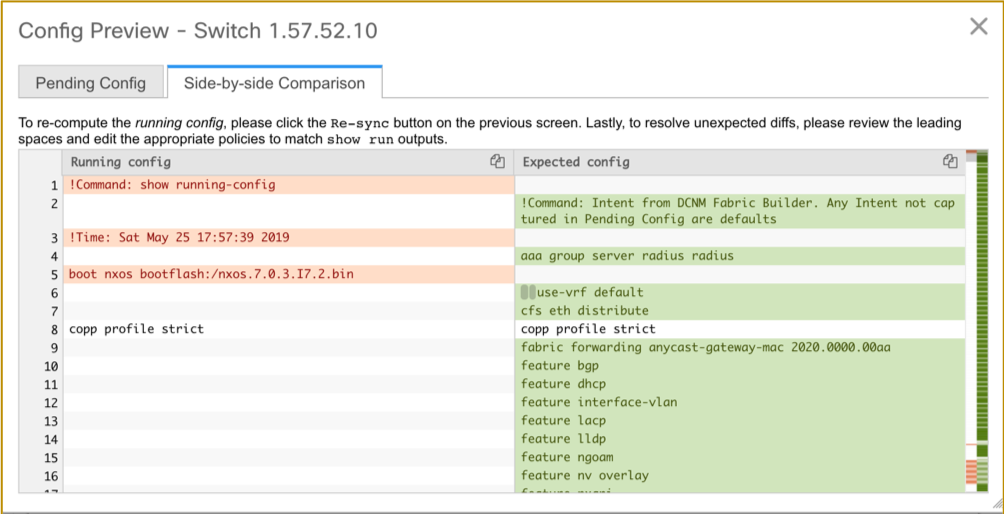As you might remember from our last posts in the DCNM 11 series, we discussed Using DCNM 11 for Easy Provisioning of Networks and VRF’s. Today, we are continuing the discussion by featuring how DCNM empowers compliance of the configurations defined by a user.
Validation of configuration forms an integral part of any Network Controller. Configurations need to be pushed down from the controller to the respective switches as intended by the user. More importantly, configurations need to be in sync and in compliance with the expressed intent at all times. Any deviation from the intended configuration has to be recognized, reported, and remediated – this approach is often described as “closed loop.” In the DCNM LAN Fabric install mode, Configuration Compliance is supported for VXLAN EVPN networks (within Easy Fabrics) as well as traditionally built networks within an External Fabric.
Configuration Compliance is embedded and integrated within the DCNM Fabric builder for all configuration including underlay, overlay, interfaces and every other configuration that is driven through the DCNM policies.
The user typically builds intent for the fabric customizing the various fabric setting options as well a combination of best practice and custom templates. Once the intent is saved and pushed out by DCNM, it periodically monitors what is running in the switches and tracks if there was any Out-of-Band change made in any function of the switch using CLI or another method. If changes are made differing from the applied intent, DCNM will mark the switches as Out-of-Sync indicating a violation in compliance. This warning to the user provides information about the running configuration of the respective switch does not match the intent defined in DCNM. The Out-of-Sync state is indicated by a colour code in the topology view as well as tagged with Out-of-Sync in the tabular view which lists all the switches in a fabric.

While the general concept of Configuration Compliance provides a simple colored representation of the state across the nodes, DCNM also generates a side-by-side diff view of the running configuration and expected configuration for each switch.
This diff in configuration is intended to provide the user a full picture of why a particular switch was marked out of compliance aka OUT-OF-SYNC. While at it, Configuration Compliance function provides a set of pending configurations that once pushed to the switch using DCNM, will bring the switch back to compliance aka IN-SYNC. The set of pending configurations are intelligently derived using a model-based approach that is agnostic to commands configured using CLI.

While Configuration Compliance runs periodically, DCNM also provides an on-demand option to “Re-sync” the entire fabric or individual switches to immediately trigger compliance check.
View the demo below to see a walk through of performing configuration compliance in DCNM 11
New to the DCNM 11 Series? Check out these previous posts:
- Provisioning Underlay for VXLAN EVPN Fabric using Fabric Builder in DCNM 11
- Manage Interfaces in a Centralized Way with DCNM 11
- Using DCNM 11 for Easy Provisioning of Networks and VRFs
talkcelnews.com
<a href=http://www.talkcelnews.com/#>www.talkcelnews.com</a>